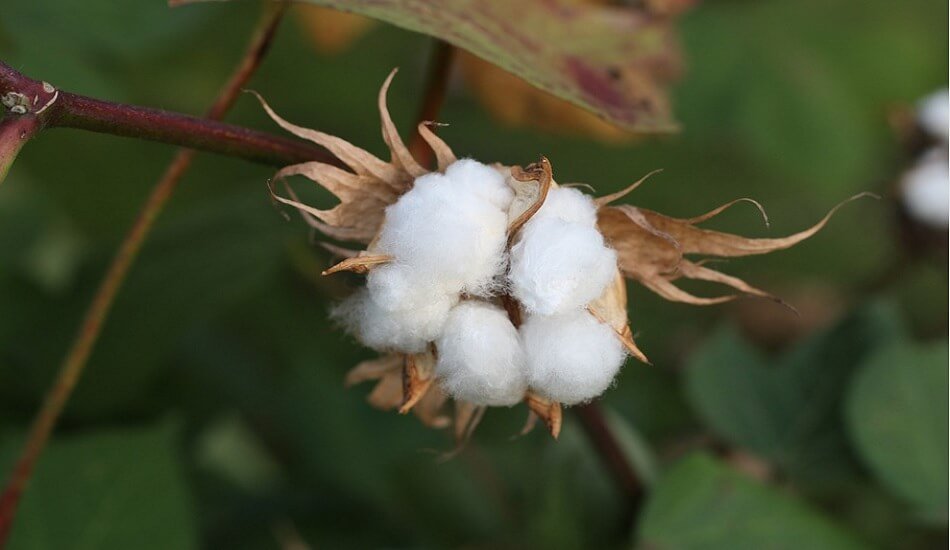Indian cotton prices began to match with the worldwide export market
According to industry participants and merchants, Indian cotton prices have begun to match market fundamentals and worldwide rates now that demand, notably for exports, has recovered.
Prices, however, have risen from this week’s lows of ₹56,000–56,500 per candy (of 356 kg). To some extent, the reported move by the Multi Commodity Exchange (MCX) to issue new cotton contracts has helped boost the market.
Ginned cotton is being priced at ₹59,500 per candy in Rajkot. Cotton futures for March delivery on the Intercontinental Exchange (ICE) in New York are priced at 83.1 US cents per pound (₹54,450/candy).
Related Agri News | Centre will buy cotton if the prices drop below MSP says, Officials
Futures on the MCX
‘The going rate in the worldwide market is 20-25 cents higher than what the ICE futures quote. Indian cotton is priced about 10 cents higher than ICE. As a result, prices have returned to parity rather than the premium seen earlier this month,’ said Anand Popat, a Rajkot-based trader in cotton, yarn, and cotton waste.
‘Indian cotton is finally matching demand fundamentals in the market. From the standpoint of the sector, it is a positive trend,’ stated Prabhu Dhamodharan, Convenor, Indian Texpreneurs Federation (ITF).
According to trade insiders, prices have risen on news that the MCX will likely release new contract specifications for cotton futures on Friday. ‘We’ve heard that MCX will issue futures contracts for February, April, June, and August. ‘There will be some revisions to the previous requirements,’ Popat remarked.
On August 26, MCX announced that it was changing the details of its cotton contracts and that no new positions would be allowed for contracts starting in January 2023 and later.
Maharashtra roadblock
‘Cotton prices, which fell by ₹1,000 per quintal on Monday, have recovered on reports that the MCX is likely to restart cotton futures,’ said Anil Ghanwat, President of the Swantantra Bharatiya Party, the political branch of the Maharashtra farmers’ association Shektkari Sanghatana.
Farmers in Maharashtra staged a roadblock on December 26 as prices fell dramatically.
‘The first trigger (for the price drop) came from the American markets. ‘China canceled a record 1.45 lakh bales of contracts, the first cancellation since 2012, leading to negative market sentiment,’ said Dhamodharan.
This is due to the volatility in China’s domestic market. ‘China exports textile products worth $270 billion, and its domestic textile consumption is $300 billion,’ he said. The fact that such a large participant isn’t there because of problems has led to a bad trend in the market, first in the US and now in India, says the ITF convenor.
Retail sales are down 30%
‘Current prices have lowered the margin for spinners, whereas ginners have no parity. This has influenced cotton purchases,’ Popat explained. ‘With prices falling and growers being disappointed, they have begun to reduce the amount of cotton they bring to market,’ said Ramanuj Das Boob, a sourcing agent for multinationals in Raichur, Karnataka.
Related Agri News | CAI asks Goyal to remove 11% import charge on cotton immediately
Cotton prices have gone down around the world because retail sales in the fashion industry have dropped by about 30%. ‘November-end figures show a 30% decrease for several global brands in China due to Covid difficulties,’ said Dhamodharan.
‘Prices have risen slightly after a steep drop. Cotton prices are unlikely to decrease further, according to Popat. Farmers are unwilling to sell cotton at low prices, which is one of the reasons for the anticipated trend.
‘Kapas (raw cotton) prices have fallen to ₹7,500 per quintal. This compares to nearly ₹9,000 received by farmers last year. ‘They are looking for better pricing and have reduced the quantities they bring to the market,’ explained the Raichur sourcing agent.
It is difficult to regain offtake loss
According to Agmarknet, a subsidiary of the Agriculture Ministry, kapas prices are currently at ₹7,950 per quintal in the Rajkot agricultural produce marketing committee (APMC) yard, down from ₹9,000 at the same time last year.
‘In India, 50% of spinning capacity was idle in October. ‘While capacity utilization is improving, it will be impossible to recuperate the 30-35 lakh bales of consumption lost this cotton season (October 2022-September 2023),’ said ITF’s Dhamodharan.
With Indian cotton prices finally matching the fundamentals, export demand has resurfaced. ‘The demand came from Bangladesh. ‘We anticipate China and Vietnam requesting cotton from us shortly,’ Popat said.
‘We have secured only a tiny order from Bangladesh for exporting. ‘Demand has yet to reach expected levels,’ said Boob. Related Agri News | CAI estimates India’s domestic cotton demand drop nearly by 6% in 2022–23
2023 forecast
Because the textile sector has bottomed out, it will have an opportunity to develop in 2023. ‘According to Mastercard spending Pulse data released last week, US retail sales are showing some momentum, with garment sales increasing by 4% in value terms over the last two months and 14% over the last week,’ said Dhamodharan.
Also, big retailers in the U.S. and Europe haven’t made any orders in the last two to three months. ‘Their inventories have been depleted or are nearing depletion. ‘They will come after the holidays to place new orders,’ he said.
Chinese consumption will very certainly increase. Because domestic savings in China have expanded by 50% in the last two years, the ITF convenor predicts ‘revenge buying’ in the Chinese retail market after 60 or 90 days. ‘The key to the industry’s revival will be US retail sales and the Chinese rise in early 2023,’ he said.


















Add Comment